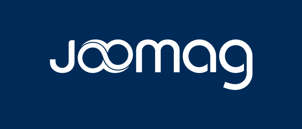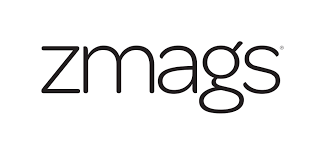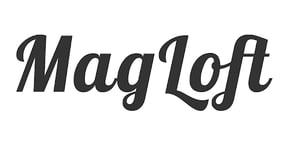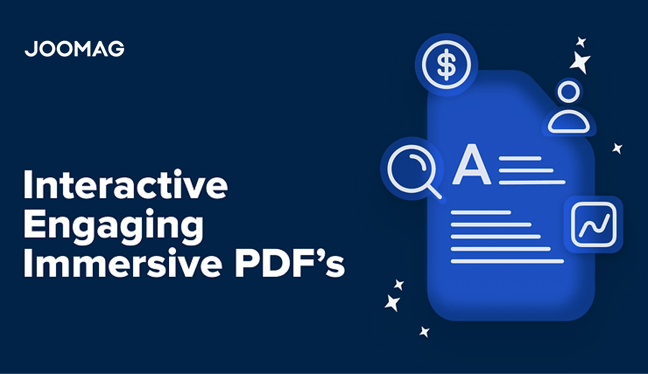
Choice matters. But if you’re new to online publishing, too much of it can be overwhelming. When it is, choosing the right digital publishing platform for your business just isn’t fun anymore-- it’s a chore. You spend countless hours researching the market. And when your top-10 list of potential nominees is finally prepped and ready, you don’t know which one to choose because they all look alike.
After all, digital publishing can be a time-consuming investment. And when your hard-earned money is thrown into the mix, it’s clear why many publishers dip their toes first before jumping into the water. The industry’s budding. There are thousands of platforms out there. So making the right choice while getting the most bang for your buck seems like a total Hail Mary.
It’s not. Any purpose-driven business can make digital publishing work. But getting started; that is, choosing a user and feature-friendly platform, is often the hardest part. To help you in this regard, we’ve pored over every digital publishing platform available on the market today. Here are 10 worth every publisher’s time and money.
What is Digital Publishing? Let’s Clarify First
Digital publishing (or e-publishing) is exactly what it sounds like. It means using online technology to digitize and distribute media through electronic devices (computers, tablets, smartphones, etc.).
Some popular examples today include online magazines, newsletters, books, libraries, reports, brochures, catalogs, journals, ads, blogs, blog posts (like the one you’re reading right now!) websites, games, videos, and photo albums.
In fact, the entire world’s gone digital. We explained why in our previous post.
10 questions to ask yourself when choosing a digital publishing platform
There are a myriad of e-publishing vendors to choose from. Unfortunately, some publishers commit to one without researching their options first. To build an effective working relationship with the platform of your dreams, you’ll need to consider how it fits your needs and into your budget first. So ask yourself these important questions before making a purchase.

1. Is this platform easy to use?
2. How much does it cost?
3. Will it let me create what I need to create?
4. Is interactivity included? Can I add videos, pop-ups, and feedback plugins to my publications, for example?
5. Can I measure my content’s performance with built-in analytics?
6. Can this platform integrate with other services I’m currently using?
7. Will it let me target specific audiences?
8. Can I distribute my content across multiple channels? What sharing tools does it offer?
9. Can the content I create adapt to multiple devices and platforms?
10. Does this platform offer any support when or if I need it?
Top 10 Digital Publishing Platforms to Consider Right Now
1. Joomag

2. Yumpu

Yumpu is a “provider of innovative and high-quality software for e-publishing and online marketing. It “offers a digital platform for publishing magazines, brochures or catalogs” so that “publishers can “communicate [their] message and grab the attention of new readers.”
3. Readz

4. Zmags

Zmags is a “shoppable content company” that “empowers digital marketing and eCommerce professionals to create and publish engaging digital experiences in minutes, without writing a single line of code. Retailers can use [its] drag-and-drop technology to easily create and quickly deliver the rich, shoppable experiences that drive engagement and conversions.”
5. Adobe

A “global leader in digital media and digital marketing solutions.” Adobe’s “creative, marketing and document solutions empower everyone – from emerging artists to global brands – to bring digital creations to life and deliver immersive, compelling experiences to the right person at the right moment for the best results.”
6. Aquafadas

7. MagLoft

MagLoft “empowers indies, print publishers, agencies and enterprises to become digital publishers with their own fully customized native apps for iOS, Android, Web, Desktop and more.”
8. Quark

Quark offers an “end-to-end content automation platform that enables the creation, management, publishing and delivery of content across print, Web and digital channels.” Publishers can create “regulatory documentation, policies and procedures, investment research reports or interactive marketing communications.” Quark’s vision is to “leverage automation to transform the entire life-cycle of business-critical content to make the world’s most innovative organizations more efficient, more effective, and more competitive.”
9. Flipsnack

Flipsnack is a “professional digital publishing tool that can be used to easily publish captivating online magazines, transforming your PDFs into online flipbooks. Flipsnack publications support rich media features, like video, audio, online forms, shopping widgets, captions, and more.” Created assets “work on all types of devices, including smartphones and tablets, and they can be easily embedded into any website.”
10. FlipHTML5

For comparison’s sake, we’ve compiled a list of features each digital publishing platform offers (or doesn’t offer) to help you make a better-informed decision.
Feature Comparison: Making an Informed Decision
For interactive content creation:
1. Joomag: choose from over 300 predesigned templates, or upload a PDF file and convert it into an HTML5 flipbook. Add interactive elements and rich media - videos, audio files, hotspots, links, slideshows, and plugins. With Joomag users can create digital magazines, brochures, catalogs, presentations, newsletters, white papers, flyers, portfolios, newspapers, documents, menus, user manuals, etc.
2. Yumpu: convert PDF files into digital magazines, catalogs, or brochures. Users can integrate videos from their PCs or YouTube, include picture galleries and links to personal shops or websites, and add audio files from SoundCloud.
3. Readz: users are free to create online catalogs, magazines, reports, white papers, micro-sites, lookbooks, and more via the Readz editor. Interactive elements include modules, styles, actions, and animations.
4. Zmags: the Zmags Creator is a drag-and-drop tool that enables publishers to create digital quizzes, buying guides, lookbooks, and more without coding. Its interactive shopability features make converting visitors to loyal customers fast and easy. Includes embeddable animations, videos, hotspot links, pop-up content, lightboxes, iframes, and e-commerce quick views.
5. Adobe: the Adobe Digital Publishing Suite lets publishers “create, distribute, monetize, and optimize publications for tablet devices.” Pull existing assets or create new content from scratch.
6. Aquafadas: convert existing print files to a digital format, use the InDesign Authoring plugin, or use the latest content from your CMS. Publishers can then build their own interactive apps by dragging and dropping elements into them (videos, slideshows, etc.).
7. MagLoft: upload a PDF file and add interactive elements like audio and video to it. The TypeLoft editor allows publishers to drag and drop interactive YouTube, SoundCloud, image, tap-to-reveal, slideshow, parallax, and HTML5 widgets to their apps.
8. Quark: QuarkXPress is Quark’s premier design software that allows businesses to create digital advertising materials, brochures, flyers, magazines, books, user guides, catalogs, newspapers, newsletters, postcards, financial reports, banners, flipbooks, mobile apps, and more.
9. Flipsnack: start from scratch or convert PDF files into interactive flipbooks, catalogs, magazines, and brochures. Publishers can add interactive media, including video, audio, links, shopping buttons, and social media buttons.
10. FlipHTML5: transform PDF files and other documents into attractive digital flipbooks. Enrich publications with multimedia and animation effects (links, images, video, audio, sliders, hotspots).
For distribution:
1. Joomag: use short links to share your publications on different channels or embed them in your own website and blog. Publish content on your custom-branded app, and distribute your publications using email campaigns. Publish your digital assets on Joomag Newsstand.
2. Yumpu: content can be published on Yumpu.com, social media networks (Facebook, Twitter, Google +, and Pinterest), personal websites via embed codes, blogs, custom Android and iOS apps, and in personal WEBKiosks under your own domain.
3. Readz: share content through email, image downloads, and multiple social channels, including Twitter, Facebook, Pinterest, LinkedIn, and Google+.
4. Zmags: distribute content through email, personal websites, blogs, and social media channels like Facebook.
5. Adobe: apps can be delivered on any platform and device (iOS, Android, Windows, and the Web).
6. Aquafadas: apps can be published on any screen size and device, including iOS, Android, and Windows.
7. MagLoft: deploy apps on any Android, iOS, and Windows smartphone or tablet.
8. Quark: Quark’s content automation solution delivers published content to your enterprise content management system, Web CMS, or apps for customers and employees to access.
9. Flipsnack: guarantees that “flipbooks will work in all modern browsers and look awesome on all devices, regardless of the screen size.” Content can be shared through email, Facebook, Twitter, Pinterest, Google +, LinkedIn, websites, blogs, and offline downloading.
10. FlipHTML5: share content on iPad, iPhone, Android, and tablet devices. Flipbooks can also be distributed through multiple social networks, including Facebook, Twitter, and Google Plus.
For lead management:
1. Joomag: Joomag's lead capture forms are fully customizable. Publishers can edit predefined fields, add new ones, or include personalized thank you messages. Lead gen forms can be embedded on any page of the publication, they also can be made mandatory to be filled in. Publishers can embed lead forms into own website and cultivate leads for the gated content.
2. Yumpu: does not offer any lead management tools on its platform.
3. Readz: create responsive lead gen forms with the Readz editor, receive emails when they’re completed, create custom mailing lists, and manage all information from a central dashboard.
4. Zmags: does not offer any lead management tools on its platform.
5. Adobe: does not include lead gen tools of its own, but can be integrated with other systems.
6. Aquafadas: does not offer any lead management tools on its platform.
7. MagLoft: does not offer any lead management tools on its platform.
8. Quark: does not provide lead management tools of its own, but can integrate with lead gen software.
9. Flipsnack: does not include lead management tools
10. FlipHTML5: does not include any lead management tools on its platform.
For selling:
1. Joomag: sell subscription packages and individual issues of your online magazine directly from Joomag’s platform or through your own website.
2. Yumpu: publishers can sell magazines and subscriptions from their apps by enrolling in Yumpu’s most expensive plan-- PROKiosk.
3. Readz: currently does not offer any selling options on its platform.
4. Zmags: enables users to create shoppable digital experiences with guided selling tools.
5. Adobe: the Adobe Digital Publishing Suite supports multiple app payment options, including single purchase, subscription, and all-access models.
6. Aquafadas: apps can include in-app purchases, subscriptions, i-ads, and push notifications.
7. MagLoft: custom subscriptions enable publishers to convert their existing subscribers from other channels into paying customers on MagLoft.
8. Quark: does not feature any monetization tools on its platform.
9. Flipsnack: sell digital magazines directly on Flipsnack’s platform. Readers can purchase a publication from its preview edition. Publishers collect revenue through Stripe.
10. FlipHTML5: e-commerce feature enables publishers to sell their self-published flipbooks on FlipHTML5 by setting their price, currency, and previewable pages.
For analytics:
1. Joomag analytics provide publishers with in-depth content insights (readers, average session duration, pageviews), traffic insights (traffic sources, geolocations and devices), engagement insights (PDF downloads, links).
2. Yumpu: integrates with Google Analytics.
3. Readz: analytics dashboard includes traffic data (views, sessions, duration, etc.), conversion data, and acquisition data.
4. Zmags: can be integrated with Google Analytics.
5. Adobe: features Adobe analytics and full integration with other Experience Cloud solutions.
6. Aquafadas: integrates with Google Analytics.
7. MagLoft: MagLoft’s analytics track your app’s usage. Metrics include users, time spent by users, total number of sessions, geolocations, engagement time, and automated/scheduled push notifications.
8. Quark: Docurated is Quark’s sales enablement software that includes five different analytics dashboards: Site Usage, Content Activity, Searches, Topic Actions, and Processing
9. Flipsnack: built-in analytics include Views, Shares, Downloads, Impressions, Average Time Spent, Shares, Devices, and Sources. Flipsnack is also integrable with Google Analytics.
10. FlipHTML5: integrates with Google Analytics.
Pricing Overview: Budgeting for Your Digital Publishing Needs
1. Joomag: features 4 membership plans: Start ($39/month), Grow ($79/month), Scale ($149/month) and Enterprise (pricing varies; for large scale businesses). Users can try Scale free of charge for 14 days. Joomag also offers 3 EDU plans for schools, colleges, and universities: EDU Class (free), EDU School ($495 USD per year), and EDU Campus ($4,950 USD per year).
2. Yumpu: includes 5 pricing plans: Free, AdFree ($19.95/month - includes free 30-day trial), WebKiosk ($95/month - includes free 30-day trial), AppKiosk ($219/month), and ProKiosk ($339/month).
3. Readz pricing: features 1 membership plan: Studio ($ 250/month). You can customize and grow your plan with add-ons.
4. Zmags: publishers will need to contact the company’s support team to discuss pricing.
5. Adobe: pricing is different for individuals, businesses, students and teachers, and schools and universities.
6. Aquafadas: offers publishers their first mobile apps for free. However, repeat customers will need to contact the company for pricing.
7. MagLoft: includes Free plan - Indie Publisher (web app), Online Publisher ($29/month / web app), Mobile publisher (299/month/web + mobile apps) Business ($499/month/web + mobile apps)
8. Quark: has multiple products with varying price tags. Visit the Quark Store for a full rundown.
9. Flipsnack: Free, Starter ($14/month), Professional ($35/month), and Business ($79/month).
10. FlipHTML5: Free, Pro ($15/month), Gold ($29/month), Platinum ($299/year)
Making the Choice: Why Joomag Stands Out
We’re a little biased here, but when your platform offers everything the other guys don’t, it’s hard not to be, right?
Joomag is the market-leading digital publishing platform plugged into more than 700,000 businesses around the world. We’re the all-in-one platform for a reason: publishers can create, distribute, track, and monetize their interactive content from one centralized hub. That means less clutter and more control over your content.
Don’t just take our word for it. See what customers are saying about us over at G2 Crowd-- the world’s leading business software review platform. Joomag is also changing the way businesses do business; view our collection of case studies to learn more.
Still undecided? That’s okay! Talk to us and we’ll walk you through each and every option. Book a demo here.
FAQ
Q: What exactly is digital publishing?
A: Digital publishing, or e-publishing, involves distributing media through electronic devices like computers, tablets, and smartphones. It encompasses a wide range of content, including online magazines, books, blogs, videos, and more.
Q: What factors should I consider before selecting a digital publishing platform?
A: Before making a decision, it's crucial to evaluate factors such as ease of use, cost, features offered (including interactivity and analytics), integration capabilities, audience targeting options, distribution channels, device compatibility, and available support.
Q: What are some top digital publishing platforms available?
A: Several platforms offer a variety of features to meet different publishing needs. Some notable options include Joomag, Yumpu, Readz, Zmags, Adobe, Aquafadas, MagLoft, Quark, Flipsnack, and FlipHTML5. Each platform has its strengths and pricing structures, so it's essential to compare them based on your specific requirements.














